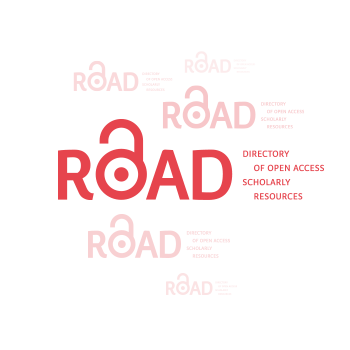Violence Hidden in the Commercials Discourse on Social Media Sociological Reading
DOI:
https://doi.org/10.59994/pau.2023.1.5Keywords:
Hidden violence, Commercials discourse, Virtual contextAbstract
The study aimed to answer the main study question: What are the impacts and forms of hidden violence in commercials discourse? The researchers used the qualitative approach, and a number of in-depth interviews were conducted, distributed into focus groups consisting of 25 individuals, five heads of families, and three specialists in management and marketing in the governorates of Bethlehem. The study reached the following conclusions: Violence hidden in the Commercials discourse appeared when the social media surfers were involved in social media and raising their volume of consumption, reaching waste on one hand and extravagance on the other, which resulted in anxiety as indicated by the interviewees. Moreover, the interviewees exhibited the extent to which they were impacted by violence hidden in commercial discourse when the latter permeated their social status, which is always navigating in search of their absent identity among the attractive commercial. The interviewees could not restrain themselves from moving through the commercial content. Furthermore, violence hidden in commercial discourse manifested itself in arousing the desire hidden inside them. They expressed that they oftentimes find themselves unconsciously involved in search of attractive trademarks and other competing ones. Besides, violence hidden in commercial discourse had an impact on the predominance of foreign products and the melting of domestic ones. It was noticeable that most of the interviewees purchased the foreign product at the expense of the domestic one. This creates a state of a feeling of contradiction between the status of fluid global values and the landmarks of a scattered national identity. Finally, the two researchers noticed that the power of violence hidden in commercial discourse had transcended the roles of many of the classical sociological variables. Therefore, the variable of controlling the electronic virtual context had a powerful impact that contributed to spreading consumption and the exercise of power on social media sites.
Downloads
References
المراجع العربية:
بارود، إياد. (2018). دور التجارة الإلكترونية في تحقيق الميزة التنافسية في البنوك التجارية الوطنية في قطاع غزة. (رسالة ماجستير غير منشورة). الجامعة الإسلامية. غزة. فلسطين.
باومان، زيغمونت. (2016). الحداثة السائلة. (ترجمة: سعد البازعي وبثينة الإبراهيم). أبو ظبي، هيئة أبو ظبي للسياحة والثقافة.
بن عامر، زيد. (2008). ورقة بحثية بعنوان مظاهر الاقتصاد الجديد. الجزائر، مدرسة علوم التسيير بسكرة.
حايف، شيراز؛ وخان، أحلام. (2021). التجارة الإلكترونية بين دوافع ومخاوف التعامل من وجهة نظر عينة من الأساتذة الجامعيين ببسكره. مجلة استراتيجية التحقيقات الاقتصادية والمالية، 3(1)، 52-71.
الحجيلي، فتحيه. (1997). محاضرات غير منشورة في عالم الإجرام. جامعة بغداد، العراق.
راضي، زاهر. (2003). استخدام مواقع التواصل الاجتماعي في العالم العربي. مجلة التربية، العدد (15)، 1-23.
الرامخ، محمد. (2007). علم الاجتماع الاقتصادي. الإسكندرية، دار المعرفة الجامعية.
سويدان، نظام؛ وحداد، شفيق. (2003). التسويق مفاهيم معاصرة. عمان، دار الحامد للنشر والتوزيع.
شلاش، عنبر؛ الحوري، سليمان؛ والشورة، محمد. (2011). أثر استخدام التسويق الإلكتروني في تحقيق ميزة تنافسية لشركات الدواء الأردنية دراسة ميدانية. دراسات العلوم الإدارية، 38(1)، 143-160.
الشمري، خالد. (2012). الإعلام الاقتصادي. عمان، دار أسامة للنشر والتوزيع.
الشناوي، سمير. (2018). التنافر المعرفي: فشلت النبوءة وما زالوا مؤمنين. http://ar.housepsych.com
علي، غيضان. (2018). التجلي المقدّس لوجه الآخر في فلسفة ليفيناس. مجلة الآداب والعلوم الإنسانية، 87(1)، 353-406.
غوشي، هناء. (2015). تأثير التسويق الإلكتروني على جودة الخدمات المصرفية دراسة حالة بنك الفلاحة والتنمية الريفية. (رسالة ماجستير غير منشورة)، جامعة محمد خيضر بسكرة، الجزائر.
القريشي، غنى. (2015). علم الجريمة. عمان، دار صفاء للنشر والتوزيع.
قعيد، إبراهيم. (2017). الترويج الإلكتروني ودوره في التأثير على سلوكيات المستهلك اتجاه المنتجات المقدمة من طرف المؤسسات الاقتصادية- دراسة حالة. (رسالة ماجستير غير منشورة). جامعة قاصدي مرباح. ورقلة. الجزائر.
لقطات. (2022، 18 يناير). التسويق الإلكتروني صناعة تقدر بمليارات الدولارات لعام 2022. https://loqtat.ps
ليله، علي. (1983). النظرية الاجتماعية المعاصرة: دراسة لعلاقة الإنسان بالمجتمع. القاهرة، دار المعارف.
محمود، هاني. (2022، 5 يوليو). عدد مستخدمي فيسبوك. https://abuomar.ae
مسعد، زهية. (2022). وسائل الإعلام أثرها على الحياة العامة للمتلقي العربي. الأردن، دار أسامة للنشر والتوزيع.
ملحم، ماجد. (2019). اتجاهات المستهلك الفلسطيني نحو التجارة الإلكترونية في محافظة الخليل. مجلة استراتيجيات التحقيقيات الاقتصادية والمالية. 1(1)، 39-54.
وادي، رشدي؛ والأسطل، رند. (2001). واقع استخدام التسويق الإلكتروني لدى البنوك العاملة في قطاع غزة. مجلة جامعة الأزهر بغزة، 13(2)، ص179-234.
المراجع الأجنبية:
Alexander, B. (2006). Web 2.0: A new wave of innovation for teaching and Learning?. Educause review, 41(2), 33-34.
Fang, Y., Qureshi, I., Sun, H., McCole, P., Ramsey, E., & Lim, K. H. (2014). Trust, satisfaction, and online repurchase intention. Mis Quarterly, 38(2), 407-A9.
Sharma, S., Ku, C. Y., & Chuang, Y. T. (2016). An approach to risk management for e-commerce. PACIS 2016 Proceedings. 34. https://aisel.aisnet.org/pacis2016/34

Downloads
Published
How to Cite
Issue
Section
License
Copyright (c) 2023 Journal of Palestine Ahliya University for Research and Studies

This work is licensed under a Creative Commons Attribution 4.0 International License.
مجلة جامعة فلسطين الاهلية للبحوث والدراسات تعتمد رخصة نَسب المُصنَّف 4.0 دولي (CC BY 4.0)











